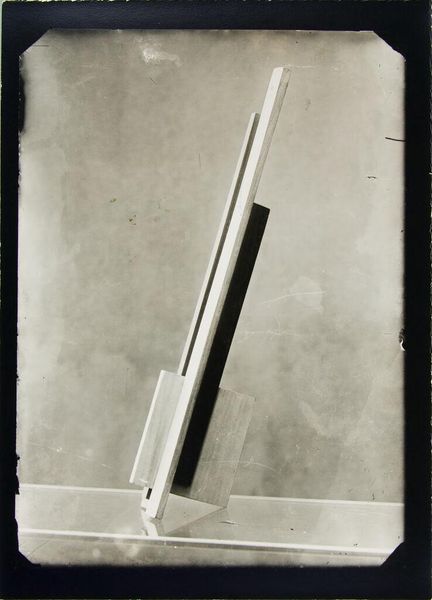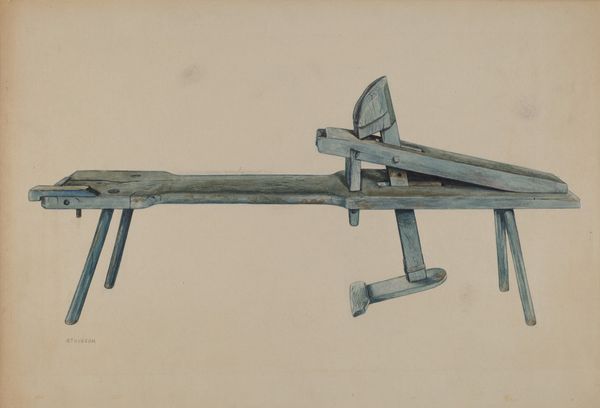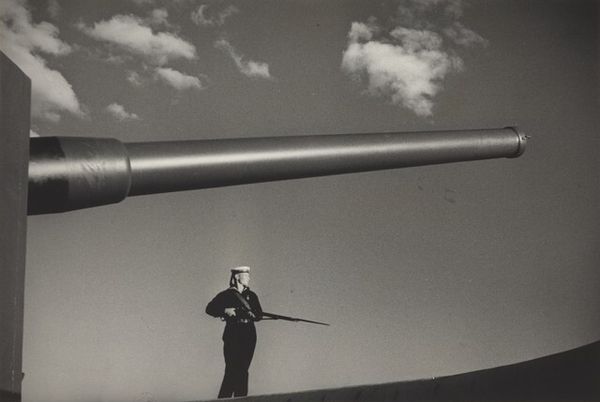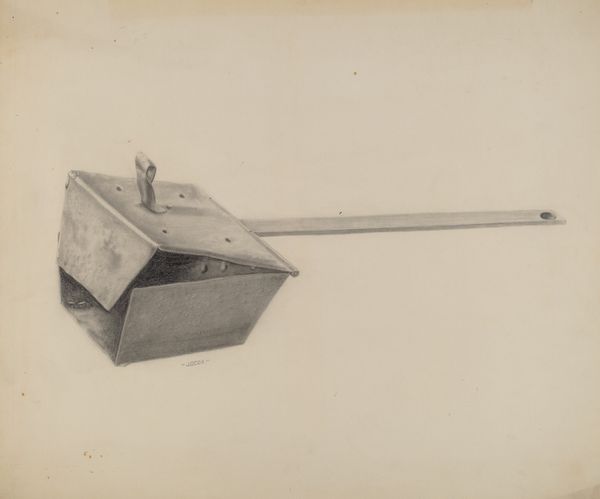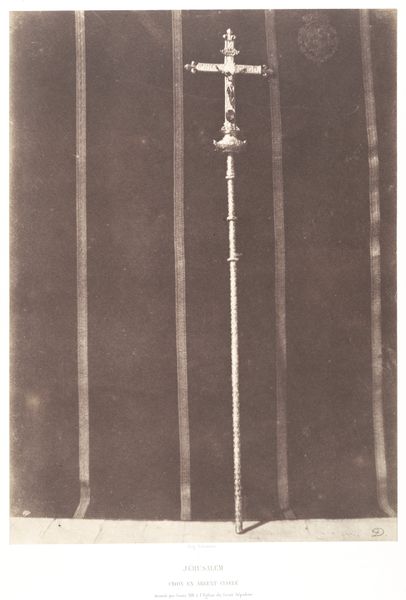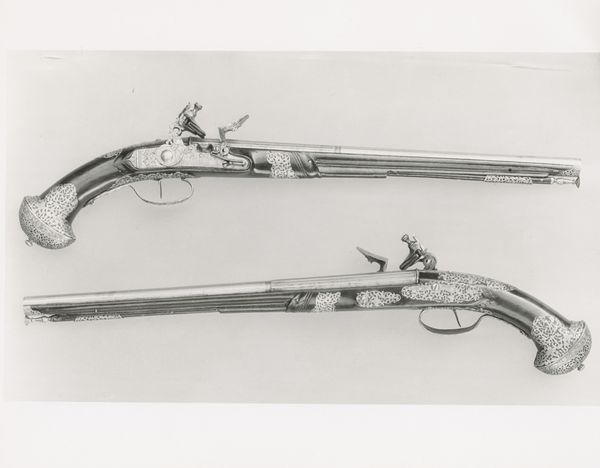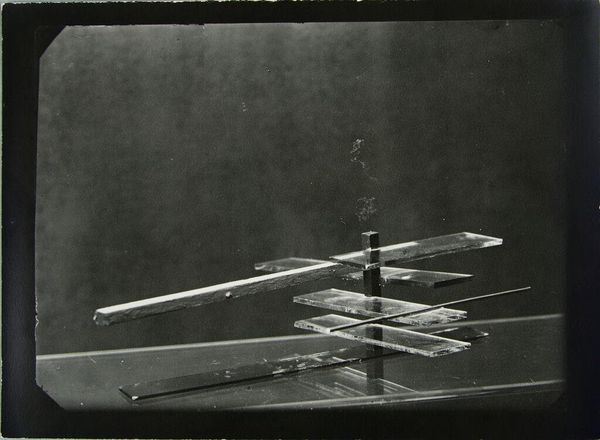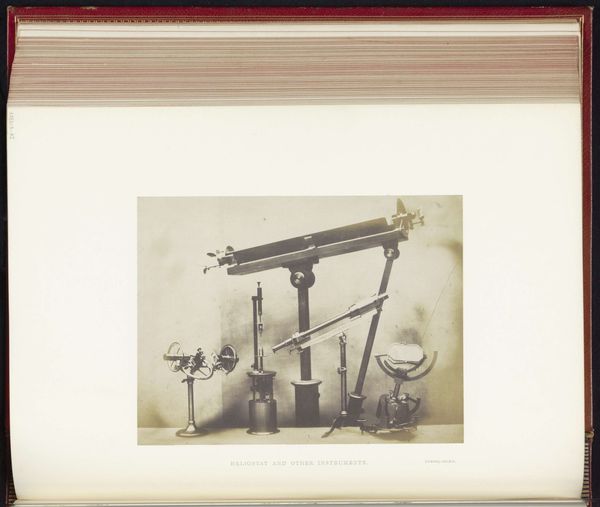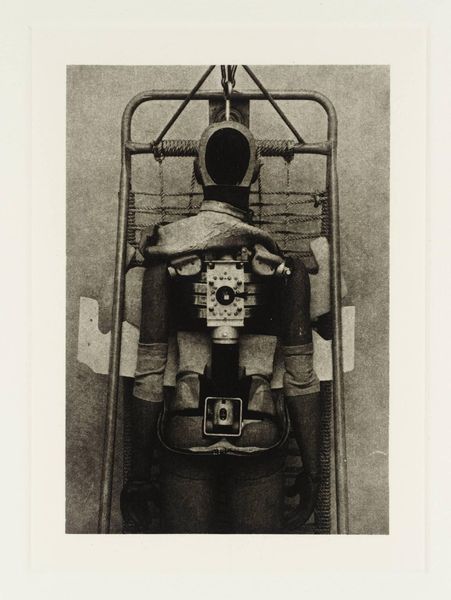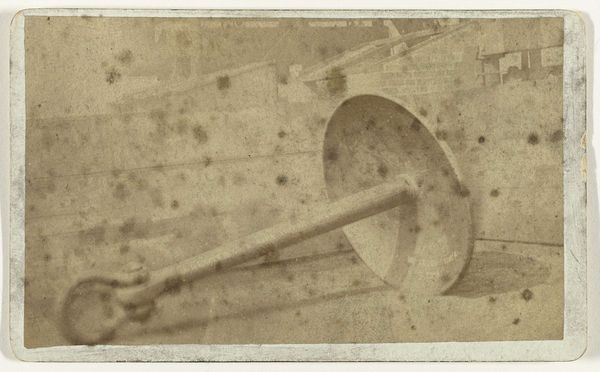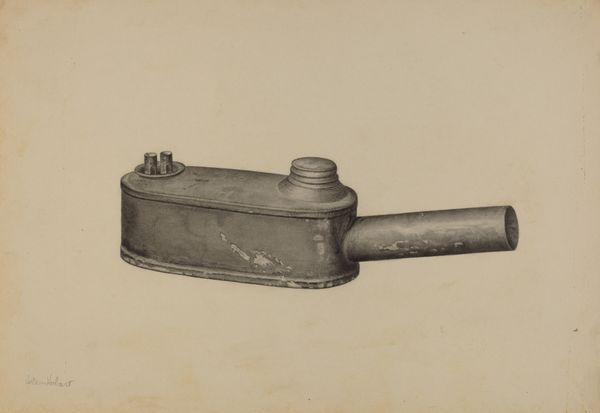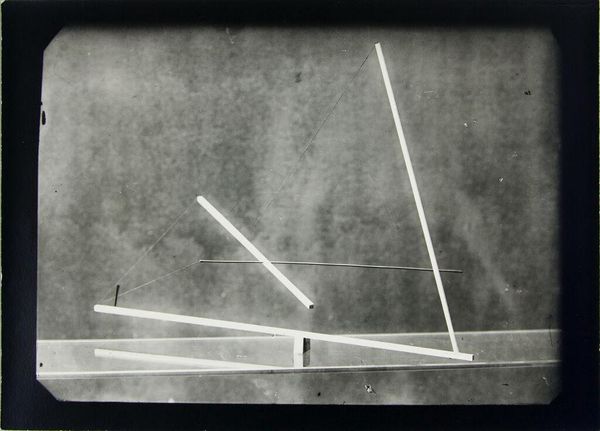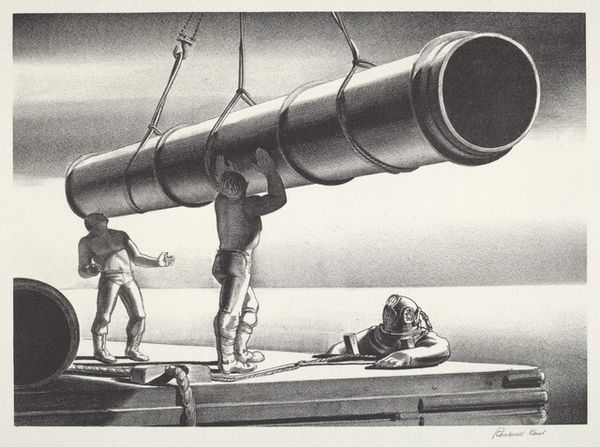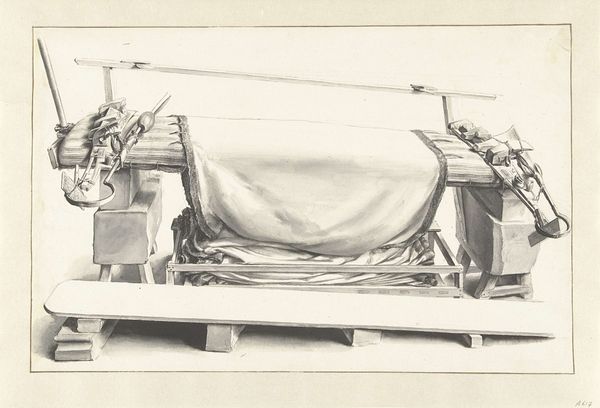
print, metal, photography, architecture
# print
#
metal
#
sculpture
#
landscape
#
civil engineering
#
historic architecture
#
photography
#
geometric
#
architecture
Dimensions: image: 5.5 x 8.4 cm (2 3/16 x 3 5/16 in.) mount: 5.9 x 8.8 cm (2 5/16 x 3 7/16 in.)
Copyright: National Gallery of Art: CC0 1.0
Curator: Today, we’re looking at Imre Kinszki's photograph, “Untitled (Elizabeth Bridge and Bridge Chain)," taken in 1929. It captures a detail of the Elizabeth Bridge in Budapest, rendered in a stark, industrial aesthetic. Editor: The imposing geometries immediately strike me. These immense, truncated metal beams reaching skyward exude an almost brutalist monumentality. It feels as though we are dwarfed by progress itself. Curator: Absolutely. Kinszki’s framing emphasizes the formal elements: the strong diagonals of the bridge chains, the cylindrical and cubic forms of the joining elements, all set against an almost blank sky. It’s a powerful study in geometric abstraction found within a functional structure. Note the almost clinical precision in the silvery grey tones, reinforcing a sense of detachment. Editor: I see a cultural echo, a visual shorthand for strength and connection. Bridges are potent symbols of transition, passages between states of being. Elizabeth Bridge, in particular, carries a history; it was destroyed during World War II and rebuilt later. Kinszki's image unwittingly becomes a memento of something vulnerable despite its imposing stature. Curator: A fitting observation. The composition invites us to consider structure as both physical reality and symbolic language. How the forms interact – their angles, their relationships to the picture plane – contribute to the photograph's overall impact. The texture itself provides important information; is it metal? Stone? It feels simultaneously permanent and temporal. Editor: I appreciate that ambiguity. We’re drawn to both the bridge’s enduring symbolism and the ephemeral moment Kinszki captured. The eye is lured in by that geometry, but lingers considering a broader scope: perhaps the losses suffered during wars and the rebuilding efforts which shape identities. Curator: Kinszki gives us a structured vocabulary that pushes us towards modernity's evolving aesthetic language. This allows our view to extend past utility toward abstract and semiotic significance. Editor: Indeed. Ultimately, I feel it reminds us that even within the cold language of industrial design, potent symbols live on.
Comments
No comments
Be the first to comment and join the conversation on the ultimate creative platform.
